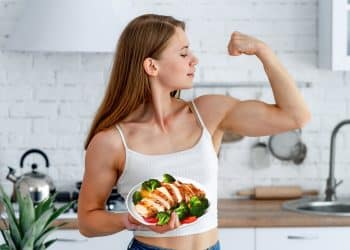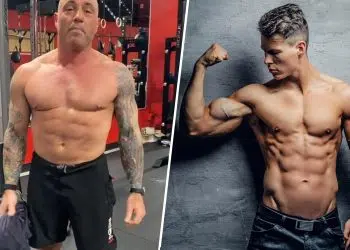Most fitness enthusiasts dash toward dairy or poultry products when asked to increase their daily protein intake. On the other hand, veggies are mainly considered a source of carbs, dietary fiber, and antioxidants.
Protein is the building block of muscle, and there should be no doubts in anyone’s mind that you need a healthy dose of it every day for optimal recovery and strength and muscle gains.
Whether you’re looking to go vegan or vegetarian or want to lower animal food sources in your diet to combat inflammation, adding high-protein vegetables can be an incredibly effective solution. (1)
Remember, some vegetables can be an excellent source of protein, which is why many vegan protein powders use green peas, edamame, and hemp seeds.
In this article, I take you over the 10 best vegetable protein sources you can add to your diet and how you can employ them to maximize your muscle-building potential.
10 High-Protein Vegetables To Promote Hypertrophy
When it comes to high-protein vegetables, you’ll be spoilt for choices. Depending on your preferences and mood, you can pick between leafy greens, vibrant legumes, mushrooms, and so much more.
Level Up Your Fitness: Join our 💪 strong community in Fitness Volt Newsletter. Get daily inspiration, expert-backed workouts, nutrition tips, the latest in strength sports, and the support you need to reach your goals. Subscribe for free!
Here are the 10 veggies that should be a part of your muscle-building diet plan:
1. Green peas: 9.2 grams of protein per 100 grams
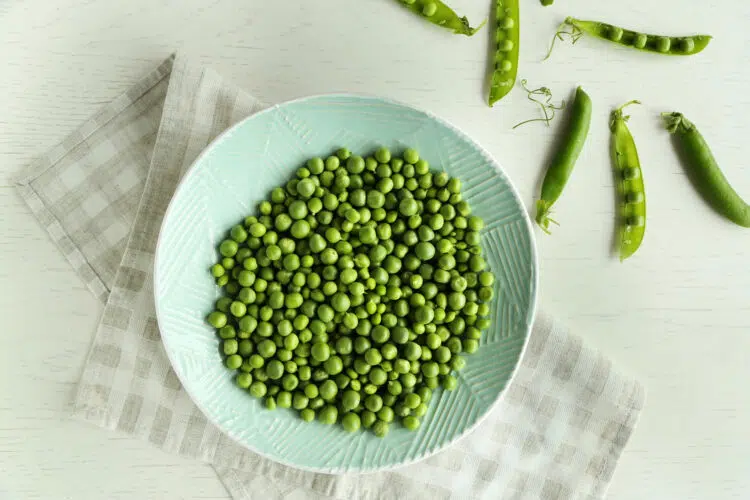
It shouldn’t be surprising to see green peas on this list since they are among the most popular ingredients in vegan protein powders. However, you must remember that green peas are not a complete protein source, meaning they do not contain all nine essential amino acids.
Protein comprises 20 amino acids. The body cannot make nine of these on its own, known as essential amino acids (EAAs). These amino acids are vital for several functions, including muscle-building, so you must consume them through foods or supplements. (2)
Pea protein has a healthy dose of essential branched-chain amino acids (BCAAs), leucine, isoleucine, and valine. These compounds can maximize muscle stimulation and gains. (3)
Peas are also rich in fiber, vitamins A, C, and K, and minerals like iron and potassium, and adding them to your diet can help boost your overall health and well-being.
Preparation Tips: Add green peas to stir-fries, salads, or pasta dishes to spike their protein content. You can also blend them into a thick cream or hummus and eat them as a side dish.
2. Edamame: 18.4 grams of protein per 100 grams
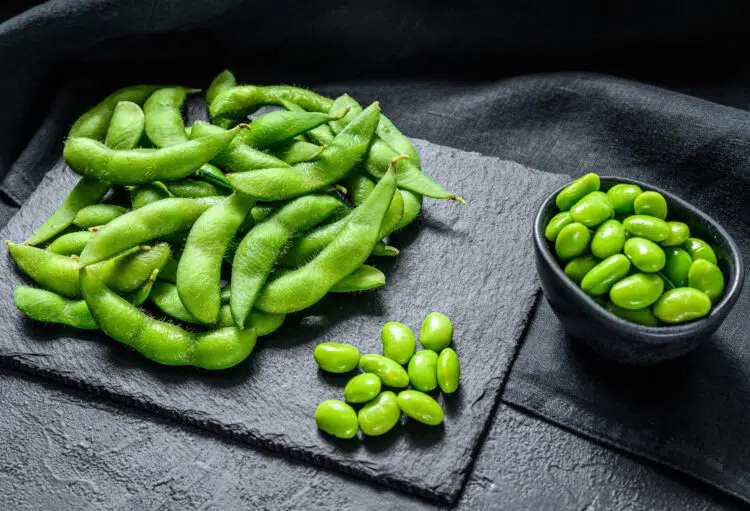
This is one of the most underrated sources of vegetable proteins. This versatile vegetable can be added to several dishes and even consumed as a snack throughout the day.
What more? Edamame boasts a complete protein profile, as it contains all nine EAAs your body needs to maximize hypertrophy.
This high-protein veggie is packed with fiber, iron, calcium, and vitamin K, which supports bone health and digestion. Edamame is an all-around solid veggie, and you cannot punch holes in its nutrient profile.
Preparation Tips: I recommend feasting on edamame as a snack, especially when you are starving. You can also add them to salad or stir-fries for a protein-packed meal.
3. Hemp seeds: 28.6 grams of protein per 100 grams
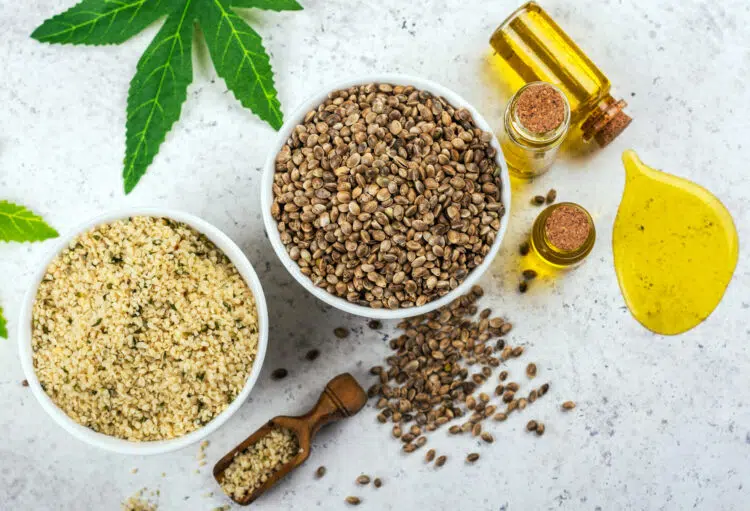
Hemp seeds have the highest amount of protein per 100-gram serving, putting them in a league of their own. Even though most people don’t have 100 grams of hemp seeds in one sitting, it is still a fantastic source of protein. A mere three tablespoons of hemp seeds contain 9.5 grams of protein.
As a cherry on top, hemp seeds offer a complete protein profile, which can boost your muscle repair and growth.
Nutritionists recommend hemp seeds to people who lack omega-3 and omega-6 fatty acids in their diet. These compounds support heart health, reduce inflammation, and aid in muscle recovery.
Preparation Tips: I sprinkle hemp seeds on my salad, yogurt, and oatmeal to boost their protein content. On my rest days, I blend them into smoothies for an enriching texture and flavor.
4. Spinach: 5.3 grams of protein per 100 grams
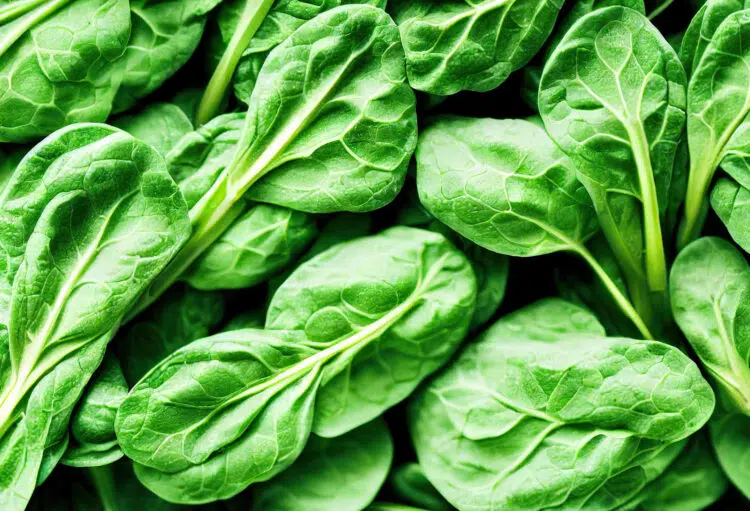
I considered spinach my arch-nemesis growing up. Only if my mom told me about its protein content and how it could really help me build arms like Popeye.
Since this is a leafy vegetable, it is also packed with antioxidants, which can help eliminate free radicals from your system and lower inflammation. Although spinach doesn’t offer a complete protein profile, it has a good range of EAAs, including glutamine, to promote muscle recovery.
Spinach is also rich in iron, calcium, and vitamin A, which can help promote blood flow and improve bone health.
Preparation Tips: You could add spinach to salads, smoothies, pasta, and even omelets to boost their nutrient profile. I sometimes sauté spinach with garlic and olive oil and eat it as a side dish. I highly recommend you try this for yourself.
5. Kale: 4.3 grams of protein per 100 grams
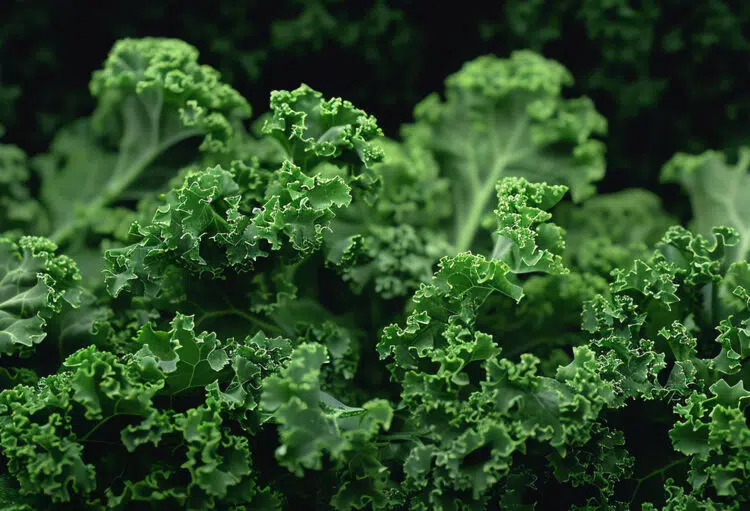
Kale isn’t the first vegetable that comes to mind when you think about high-protein veggies, but it can get the job done, especially as a side dish.
While kale doesn’t boast a complete protein profile, it contains a decent range of essential amino acids, which can help support hypertrophy and strength gains.
Leaf cabbage contains fiber, antioxidants, calcium, vitamins C and K, iron, and a wide range of other nutrients that can help prevent various health problems. It can also improve your vision, immune system, and bone health.
Level Up Your Fitness: Join our 💪 strong community in Fitness Volt Newsletter. Get daily inspiration, expert-backed workouts, nutrition tips, the latest in strength sports, and the support you need to reach your goals. Subscribe for free!
In my experience, once you develop a taste for kale, it is easy to add it to most of your side dishes.
Preparation Tips: Use kale in your salads, smoothies, and stir-fries to boost their nutrient content. Baked kale chips are another great way of adding this veggie to your diet.
6. Brussels sprouts: 3.9 grams of protein per 100 grams
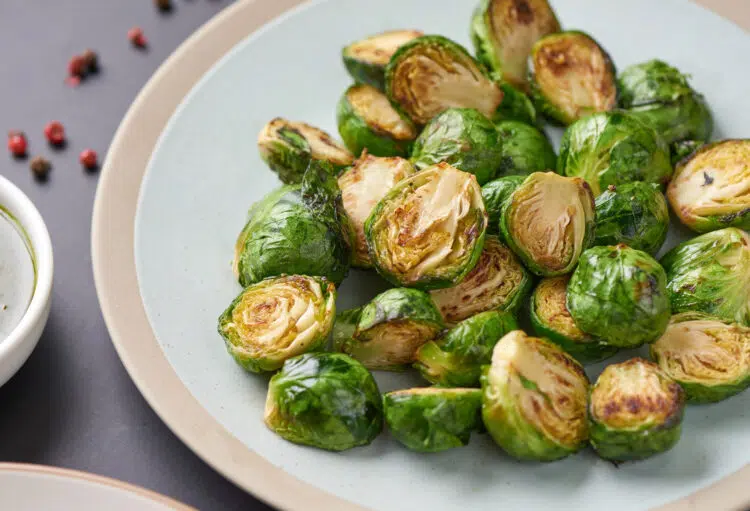
A cooked cup of Brussels sprouts is one of the most delicious sources of high-protein veggies. Like with many other veggies on this list, these don’t boast a complete protein profile. However, they have a decent range of essential amino acids to kickstart and support the muscle recovery process.
Brussels sprouts are rich in fiber, vitamins C and K, and antioxidants. These can improve your gut health, immunity, and overall health.
I have noticed that people usually have radical opinions about Brussels sprouts. They either love it or refuse to add it to their diet.
Preparation Tips: You are only limited by your imagination when cooking and consuming Brussels sprouts. You could roast, steam, or sauté them for a delicious side dish.
7. Asparagus: 2.8 grams of protein per 100 grams
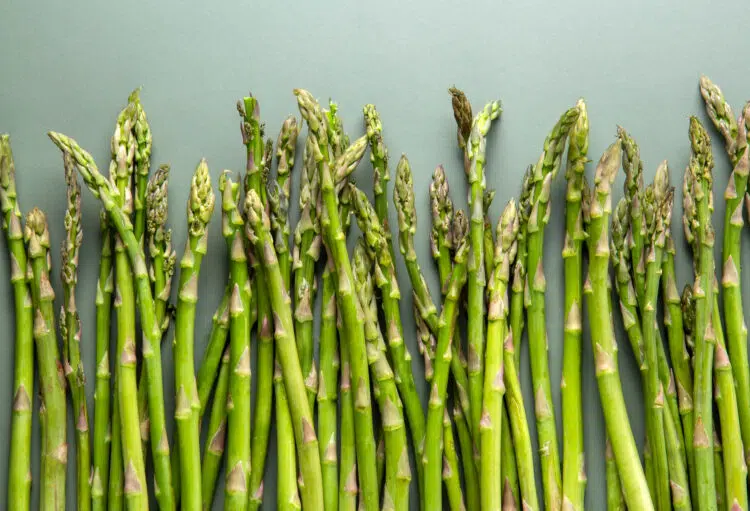
Most of us don’t eat asparagus for its protein content. I grew up eating asparagus as a snack as I was taught that it contains a lot of good stuff that can improve immunity, autophagy, and even vision.
Asparagus also contains a good chunk of EEAs, which can promote muscle recovery and hypertrophy.
Preparation Tips: Roasting, grilling, or steaming asparagus gives them a unique texture and flavor. While I like eating them as a snack, you could add them to your salads, pasta, or main dishes.
8. Artichokes: 3.1 grams of protein per 100 grams
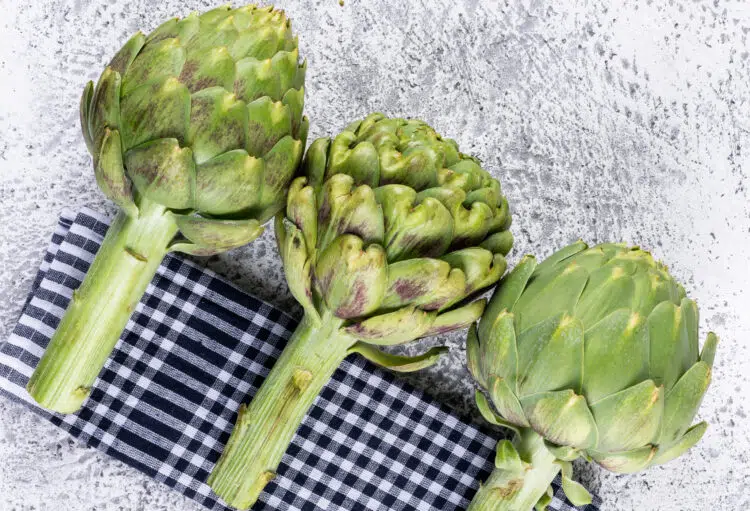
You’ve been missing out if you have never heard of artichokes before. Although an incomplete protein, it has sufficient nutrients to support muscle growth and repair.
Artichokes have a high fiber content, vitamins C and K, and antioxidants, which can help boost your gut health and nervous system health.
While eating artichokes might be a tall ask for most people, you can eat them at least once or twice weekly to add variety to your diet and ensure you are getting a wide variety of nutrients.
Preparation Tips: I prefer steaming or boiling the artichokes and dipping the leaves in melted butter or aioli. Some online recipes involve adding the hearts to salads, pizzas, and pasta dishes.
9. Chia seeds: 16.3 grams of protein per 100 grams
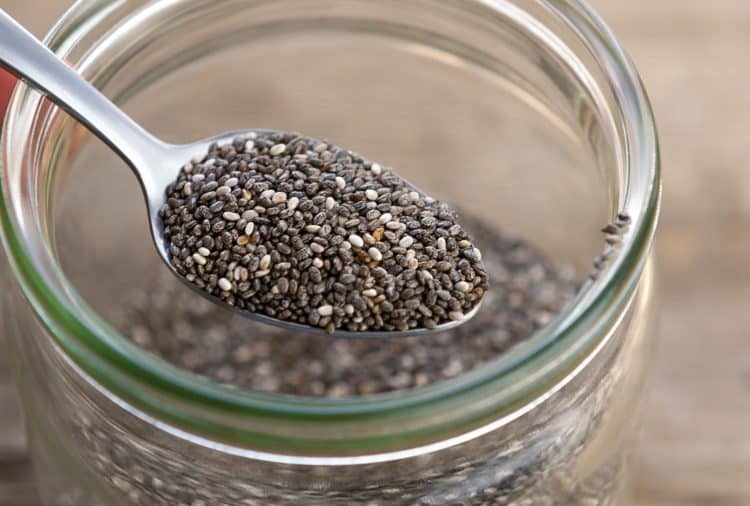
Honestly, I am a big chia seeds fan. I went from not liking them initially to never eating a healthy breakfast bowl without them. Two tablespoons of chia seeds contain 4.7 grams of protein, which can be a game-changer for your breakfast.
A healthy dose of chia seeds also prevents fiber deficiencies. While not a complete protein, it, too, has a range of EAAs, which can help support muscle growth and repair.
Besides fiber, chia seeds also contain a healthy dose of omega-3 fatty acids, calcium, and antioxidants, which can help promote heart, gut, and bone health.
Preparation Tips: Add chia seeds to smoothies, yogurts, oatmeals, and salad to spike their healthy fat and protein content. If you’ve never tried chia pudding, I highly recommend you do.
10. Mushrooms: 3.1 grams of protein per 100 grams
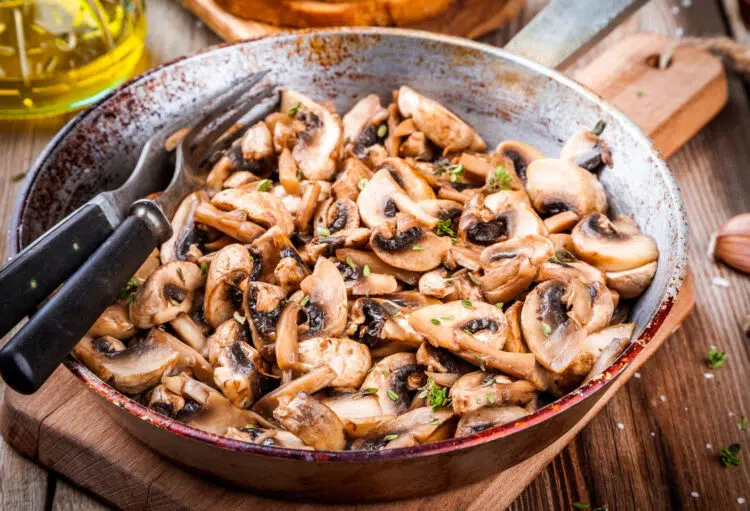
A cup of cup mushrooms can be very filling and doesn’t add a lot of calories to your bottom line. It also contains several other nutrients, such as B vitamins, potassium, and antioxidants, to promote energy production and healthy blood pressure.
Mushrooms contain a decent dose of EAAs to support your muscle-building ambitions.
Preparation Tips: There are numerous ways to add mushrooms to your diet. You could sauté, grill, or roast them and add them to salads, pasta dishes, omelets, or pizzas.
Maximizing the Muscle-Building Potential of High-Protein Vegetables
Veggies are too good to be limited to salad. You should make them a staple in your main meals to advance your fitness objectives. Here are a few ways you can maximize your muscle-building potential using high-protein veggies:
Combine With Other Sources
Each protein source is slightly different and contains a unique combination of nutrients. You must combine different vegetable protein sources in your diet to ensure you’re eating an ample supply of the nine essential amino acids to avoid any deficiencies.
I highly recommend using a calorie-tracking app to determine the nutrient quantity of different types of food sources. Remember, you don’t necessarily have to cut out dairy or poultry food sources from your diet unless you’re trying to go vegan or vegetarian. This will ensure a wide variety of foods in your diet, resulting in better progress.
Protein Timing
Dr. Layne Norton, Ph.D. in Nutrition Sciences, explains that meeting your daily protein intake goal is more important than chasing an ‘anabolic window.’ However, he suggests eating two hours before or after your workout to promote muscle protein synthesis.
Conclusion
It is time you look beyond chicken breasts, whey protein shakes, and Greek yogurt to fuel your muscle gains. High-protein vegetables are packed with essential amino acids, fiber, and micronutrients that can help you meet your fitness objectives, all while keeping your calorie count in check.
Add the 10 vegetables listed in this article to your diet program to supercharge your progress while adding flavor and variety to your meals.
If you have any questions about the 10 high-protein vegetables listed in this article, post them in the comments below, and I’ll be happy to help!
References:
- Hatami E, Aghajani M, Pourmasoumi M, et al. The relationship between animal flesh foods consumption and rheumatoid arthritis: a case-control study. Nutr J. 2022;21(1):51. Published 2022 Jul 30. doi:10.1186/s12937-022-00800-1
- National Research Council (US) Subcommittee on the Tenth Edition of the Recommended Dietary Allowances. Recommended Dietary Allowances: 10th Edition. Washington (DC): National Academies Press (US); 1989. 6, Protein and Amino Acids. Available from: https://www.ncbi.nlm.nih.gov/books/NBK234922/
- Babault, N., Païzis, C., Deley, G., Guérin-Deremaux, L., Saniez, M. H., Lefranc-Millot, C., & Allaert, F. A. (2015). Pea proteins oral supplementation promotes muscle thickness gains during resistance training: a double-blind, randomized, Placebo-controlled clinical trial vs. Whey protein. Journal of the International Society of Sports Nutrition, 12(1), 3. https://doi.org/10.1186/s12970-014-0064-5






